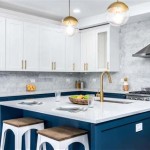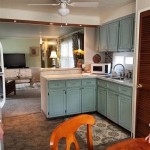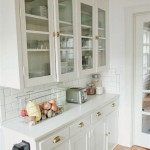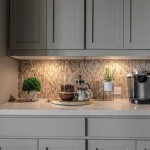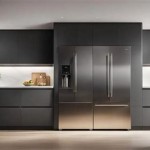Veneer Kitchen Cabinets: An Essential Guide to Style, Durability, and Value
When designing a kitchen, one of the most important decisions is choosing the right cabinetry. Veneer kitchen cabinets offer a unique combination of style, durability, and value, making them a popular choice for homeowners. Here's a comprehensive guide to everything you need to know about veneer kitchen cabinets:
What is Veneer?
Veneer is a thin layer of wood that is glued to a substrate, such as plywood or MDF. This creates a surface that looks and feels like solid wood, but at a fraction of the cost. Veneers are available in a wide variety of wood species, from classic oak and maple to exotic mahogany and teak.
Benefits of Veneer Kitchen Cabinets
Veneer kitchen cabinets offer several advantages over solid wood cabinets:
- Affordability: Veneer cabinets are significantly more affordable than solid wood cabinets, making them a great option for budget-conscious homeowners.
- Durability: Veneer cabinets are durable and resistant to scratches, dents, and moisture. The substrate provides additional strength and stability, preventing warping or bowing.
- Variety: Veneers are available in a wide range of colors, textures, and grains, allowing you to create a custom look that matches your kitchen's style.
- Sustainability: Veneer cabinets promote sustainability by using less valuable wood and minimizing waste.
Types of Veneers
There are two main types of veneers used in kitchen cabinets:
- Natural Veneer: Natural veneer is made from actual wood, resulting in a natural grain and texture. It is the most expensive type of veneer, but also the most authentic.
- Engineered Veneer: Engineered veneer is made from thin layers of wood that have been pressed together. It is more affordable than natural veneer and offers a consistent grain pattern.
Choosing Veneer Kitchen Cabinets
When choosing veneer kitchen cabinets, consider the following factors:
- Wood Species: Choose a wood species that complements your kitchen's style and durability requirements.
- Grain Pattern: Natural veneer will have variations in grain pattern, while engineered veneer will have a more consistent grain.
- Substrate: The substrate plays a significant role in the durability of the cabinets. Choose a high-quality substrate, such as plywood or MDF with a high density.
- Construction: Ensure that the cabinets are well-constructed with solid joinery and attention to detail.
Caring for Veneer Kitchen Cabinets
To keep your veneer kitchen cabinets looking their best, follow these care tips:
- Clean regularly: Use a mild soap solution and a soft cloth to clean the cabinets.
- Avoid harsh detergents: Harsh detergents can damage the veneer.
- Protect from moisture: Wipe up spills immediately to prevent water damage.
- Dust frequently: Dust accumulates on veneer cabinets just like on any other surface.
Conclusion
Veneer kitchen cabinets offer an excellent balance of style, durability, and value. Whether you are looking for a classic or modern look, veneer cabinets can be customized to complement any kitchen design. By considering the factors discussed in this guide, you can choose and care for veneer kitchen cabinets that will enhance your home for years to come.

Refinishing Kitchen Cabinets Modern Refacing Made Easy Wisewood

Kitchen Cabinets What Is A Wood Veneer Kitchens

Wood Veneer Vs Melamine Comparing Kitchen Cabinet Materials

Diy Cabinet Refacing Budget Friendly Made Easy Wisewood

Customized Modern Flat Timber Wood Veneer Kitchen Cabinet China Marble Granite Units Venner Cabinets Made In Com

Wood Veneers Vs Solid Which One S Better For Kitchen Cabinets Ikonni

Veneer Kitchen Cabinets Pros And Cons Pa

Wood Veneer Kitchen Cabinets A Review
Using Timber Veneer In Your Luxury Kitchen Dan Kitchens

Wood Veneer Kitchen Cabinets The Ultimate Guide Oppolia
Related Posts



